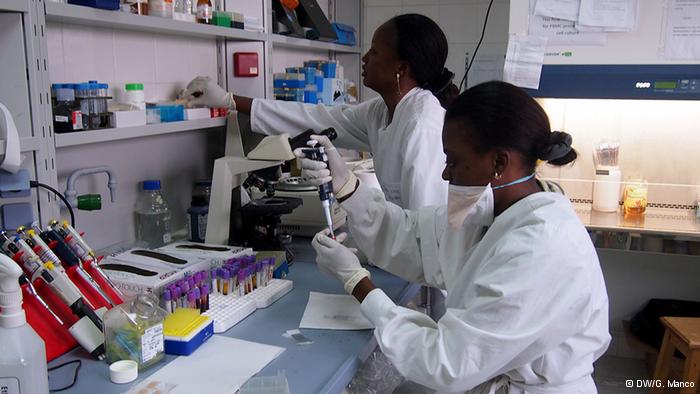Scientists in Africa are in the final stages of trials for a malaria vaccine that’s raising hopes of reducing child infections – and deaths – by half. But is 50 percent good enough?

Figures from the World Health Organization suggest that malaria infects more than 200 million people every year – causing 700,000 deaths around the world. About 90 percent of cases occur in sub-Saharan Africa.
It’s hoped the RTS,S malaria vaccine will reduce mortality rates attributed to the tropical disease in small children by half.
And it’s here at the Albert Schweitzer hospital in Lambaréné, Gabon, where much of the work on the vaccine is being done.
But the medical research center at the hospital – Centre de Recherches Médicales Lambaréné (Cermel) – is only one of 11 research centers in Africa that are completing the final phase of the clinical trials on RTS,S.
Fighting malaria on its home turf
Children and pregnant women are the most common victims of the disease.
The trials so far have shown that the RTS,S vaccine could reduce malaria infections in children by more than 50 percent.
Malaria is still probably the biggest problem here for small children and if that could be reduced by half, if hospitalization could be reduced by half, if deaths could be reduced by half, then this would have a huge impact for the country, for all these African countries,” says Dr Bertrand Lell, director of the research center.
The Albert Schweitzer hospital looks like a village with its yellow pavilions hidden by trees in the valley of the Ogooué River. The researchers live and work here – in close contact with their patients.
The air is heavy and humid in the African rainforest. But the place resonates with the singing of birds, the chanting of insects – as well as the buzzing of malaria-carrying mosquitoes.
To me, the most striking fact is the mortality rate of the disease, says Maxime Selidji Agnandji, a researcher at Lambaréné.
Around 600,000 children die every year because of malaria. So, theoretically, we could save 300,000 children, and this is going to have social and economic consequences. It’s not 100 percent effective but it is a step forward.”
Is 50 percent good enough?
This is the first time that a malaria vaccine has undergone such a large scale and advanced trial.
The Phase III trials started in 2009, involving 16,000 children across seven countries in sub-Saharan Africa – Gabon, Mozambique, Tanzania, Ghana, Kenya, Malawi, and Burkina Faso.
Phase III trials are the final stage of testing before a vaccine – or any new drug – can be submitted for approval.
Once approved, the RTS,S vaccine could be ready for use as early as 2015.
Compared to other vaccines, the 50 percent efficacy of RTS,S is low. And when tested on children aged between six and 12 months, the vaccine has shown an even poorer efficacy of just 30 percent.
Vaccines for measles and polio are close to 100 percent effective.
But the researchers say a 50 percent success rate in the fight against malaria is significant.
There is so much malaria that a 50 percent reduction would have a big impact on the disease and on the health of children,” says Dr Lell. “But because it’s not a 100 percent effective, the vaccine would have to be accompanied by other methods: mosquito nets [laced with insecticide], and rapid diagnosis and treatment.
A long history
The RTS,S vaccine was developed in the early 1980s by UK-based pharmaceutical firm GlaxoSmithKline and the US-based Walter Reed Army Institute.
It was difficult to develop the vaccine because of the complexity of malaria infection and it was almost impossible until now to understand what provokes immunity responses to malaria,” explains Cermel researcher, Eunice Betouke Ongwe.
Malaria is caused by a parasite – the plasmodium – which is more complex than many viruses or a bacteria.
“Malaria has been lethal for centuries because the parasite is very complex and it’s able to adapt and develop resistance to drugs. So even when a remedy is found, after a few years it stops working,” says Agnandji.
Since the malaria parasite develops in the human liver, RTS,S has been engineered to attach to another vaccine for hepatitis B – which operates in the same bodily region. It’s understood that this method is improving the drug’s efficacy.
The current trials are financed through a public-private partnership – incorporating a coalition of GlaxoSmithKline, European universities, African research institutes, the Malaria Vaccine Initiative, and the Bill and Melinda Gates foundation.
GlaxoSmithKline has agreed not to seek financial profit from the distribution of the first generation of the drug – if indeed it makes it to market. Instead, the company will have to wait for the drug’s second generation before it sees a return.





